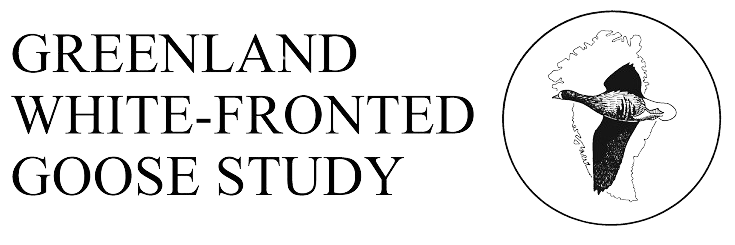History
There is no documented evidence of this flock existing before 1978, it is not mentioned by A-W (1963), although Mr Ted Gerrard, who lives on the island of Pabay, recorded between 29 and 36 birds every winter from 1970 until 1981, with 60 present in the winter of 1978/79. It was his impression that the flock used Pabay mostly as a nocturnal roost, flighting to Scalpay and mainland Skye during the daytime. This unusual pattern of roosting on an offshore island and using another undoubtedly caused this flock to be overlooked in the past and helps explain the erratic numbers and presence of the species at the better watched resorts used by the flock on the mainland.
Status
Regional importance (R&O 46). Despite very large annual fluctuations in numbers, this flock shows no overall trend in numbers, averaging c.50 since first counts started. However, because the geese move between two offshore islands, they are often elusive for counters based on land. For this reason, we should be very cautious about interpreting trends in this flock which has been difficult to census, often absent from regular resorts. They clearly exploit a very wide range of feeding areas and seem to fragment into smaller groups more frequently than do many flocks. This group would merit further study to understand the relationship of the birds to the differing feeding areas they exploit.
Maximum winter counts:
Breeding success: There are no consistent production data from this site.
Feeding sites and habitat: The flock has been reported feeding at a range of sites along the entire coast of Braodford Bay, in the Broadford and Waterloo areas out to Breakish, Strollamus, Skullamus and Ardnish Point. However, they will feed on Pabay and have been seen feeding on Scalpay and the small adjacent Guillamon Island. This flock feeds mainly on in-bye fields and managed grassland areas within the crafting lands immediately inland from Broadford Bay as well as the rough pasture of the Ardnish Peninsula. They also use saltmarsh and merse around the Harrapool area.
Roosting sites: The roost site very likely continues to be Pabay, although there is little recent information on this. Geese do resort to Loch Ashaig when disturbed during the daytime and may seek drinking water there, so this may represent an alternative roost site.
Habitat change: Not known
Aircraft disturbance: Some low-flying aircraft affect this flock, but rarely to disturb them for long periods.
Hunting disturbance: Wildfowling and rough shooting takes place, but to what extent that affects these birds with so many alternative feeding areas is unknown.
Agricultural disturbance: No more than in any comparable area of such farmland, but there is additional disturbance from winkle gathers along the shore. Although the Broadford site is much disturbed by walkers and dogs, there has been little change in recent years, and these are not thought to be a serious problem in the area.
Site safeguard: None.
SNH Natural Heritage Zones/Area: Western Seaboard.
Threats: None known
Linkages with other sites:
None, as with the Skeabost site, there have been no reports of marked birds amongst the Skye flocks to aid in identifying linkage between sites.
